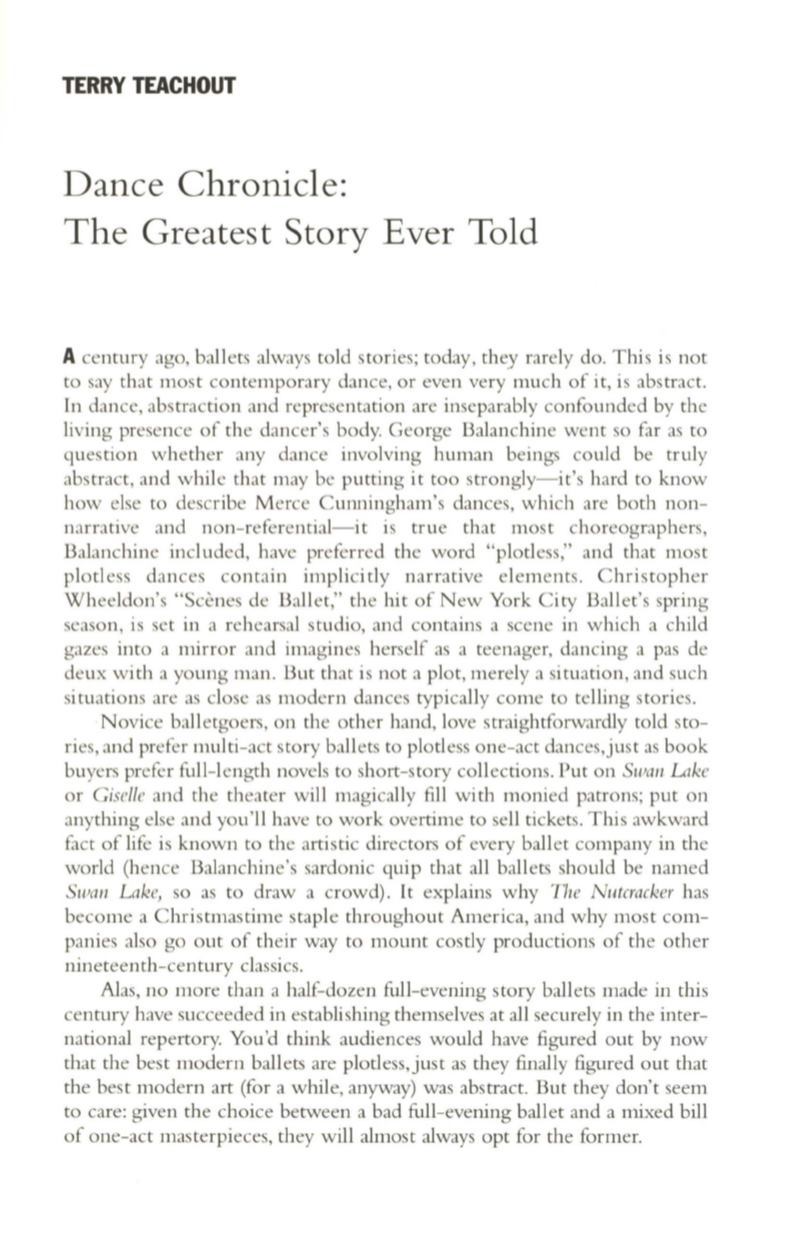
TERRY TEACHOUT
Dance Chronicle:
The Greatest Story Ever Told
A
century ago, ballets always told stories; today, they rarely do. This is not
to say that most contemporary dance, or even very much of it, is abstract.
In dance, abstraction and representation are inseparably confounded by the
living presence of the dancer's body. George Balanchine went so far as to
question whether any dance involving human beings could be truly
abstract, and while that may be putting it too strongly-it's hard to know
how else to describe Merce Cunningham's dances, which are both non–
narrative and non-referential-i t is true that most choreographers,
Balanchine included, have preferred the word "plotless," and that most
plotless dances contain implicitly narrative elements. Christopher
Wheeldon's "Scenes de Ballet," the hit of New York City Ballet's spring
season, is set in a rehearsal studio, and contains a scene in which a child
gazes into a mirror and imagines herself as a teenager, dancing a pas de
deux with a young man. But that is not a plot, merely a situation, and such
situations are as close as modern dances typically come to telling stories.
Novice balletgoers, on the other hand, love straightforwardly told sto–
ries, and prefer multi-act story ballets to plotless one-act dances,just as book
buyers prefer full-length novels to short-story coll ections. Put on
Swan Lake
or
Giselle
and the theater will magically fill with monied patrons; put on
anything else and you'll have to work overtime to sell tickets. This awkward
fact of life is known to the artistic directors of every ballet company in the
world (hence Balanchine's sardonic quip that all ballets should be named
Swall Lake,
so as to draw a crowd). It explains why
The Nutcracker
has
become a Christmas time staple throughout America, and why most com–
panies also go out of their way to mount cos tly productions of the other
nineteenth-century classics.
Alas, no more than a half-dozen full-evening story ballets made in this
century have succeeded in establi shing themselves at all securely in the inter–
national repertory. You'd think audiences would have figured out by now
that the best modern ballets are plotless, just as they finally figured out that
the best modern art (for a while, anyway) was abstract. But they don't seem
to care: given the choice between a bad full-evening ballet and a mixed bill
of one-act masterpieces, they will almost always opt for the former.


